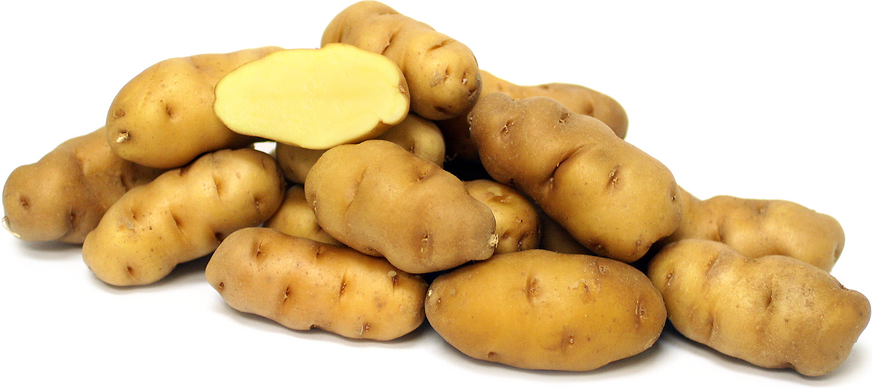


Ozette Potatoes
Estimated Inventory, 50 lbs : 0
Description/Taste
Ozette potatoes are small to medium in size and are oblong and tubular in shape, averaging 7-17 centimeters in length. The thin skin has a smooth, lumpy, and knobby texture and is tan to light brown, speckled with dark brown freckling and deep-set eyes. The flesh is gold to light yellow and is dense, firm, and moist. When cooked, Ozette potatoes develop a creamy texture that offers a rich, slightly sweet and earthy flavor with nuances of chestnuts.
Seasons/Availability
Ozette potatoes are available in the late summer through fall.
Current Facts
Ozette potatoes, botanically classified as Solanum tuberosum ‘Ozette,’ are a fingerling variety that is also known as Anna Cheeka’s Ozette and Makah Ozette. Though not a popular variety, the Ozette has an important place in the potato history of North America. Ozette potatoes are considered to be one of the only potatoes to come straight to North America rather than first being taken to Europe by the Spanish explorers. Today, it is currently listed on Slow Foods, “Ark of Taste,” which is a database of varieties that are on the brink of extinction.
Nutritional Value
Ozette potatoes provide vitamin C and potassium as well as some dietary fiber, iron, and vitamin B6.
Applications
Ozette potatoes are best suited for cooked applications such as steaming, pan-frying, mashing, or roasting. A popular preparation method is to steam whole, crush slightly with a fork, brown in the oven, and dress with olive oil and fresh herbs to enhance the naturally nutty flavor. They can also be halved and used in warm potato salads or grated and incorporated into potato pancakes. Steamed Ozette potatoes can be mashed and used as a stuffing for savory hand pies and samosas or pureed and used to make potato bread. Ozette potatoes pair well with browned butter, lemon, scallions, Pecorino Romano cheese, paprika, red meats, poultry, fish, and aioli. They will keep for a couple of weeks when stored in a cool, dry, and dark location.
Ethnic/Cultural Info
Ozette potatoes were a staple crop in the diet of the Makah nation for over two hundred years in the Pacific Northwest. The name Ozette was given as an homage to one of the villages of the Makah nation located near Neah Bay where the potato was first grown in North America. Traditionally, they prepared the Ozette potato by roasting it in a fire pit and serving it with shellfish, rabbit, birds, deer, and berries.
Geography/History
The Ozette potato first made its way to North America via Spanish explorers in the 1700s. The Spanish settled at Neah Bay in Washington state and planted a garden filled with crops that they had brought from South America and Mexico, one of which was the Ozette potato. One year later the Spanish abandoned the fort and the Makah tribe of Neah Bay took over and maintained the gardens, quickly adopting the potato as it provided a much-needed source of carbohydrates. It was not until the 1980’s that the Ozette potato was cataloged and seed made available for growing outside of the Makah nation. In 2005, the Ozette was recognized by Slow Food to be a historically significant potato and soon after a campaign was started in Washington State to increase awareness, seed availability, and usage of the potato throughout the Pacific Northwest. Today, the Ozette potato can be found in the United States in home gardens and limited farmers markets.
Recipe Ideas
Recipes that include Ozette Potatoes. One
| Washington Grown |
|
SIP NICOISE SALAD |
| Sunset |
|
Makah Ozette Potatoes with Bacon Cream |




